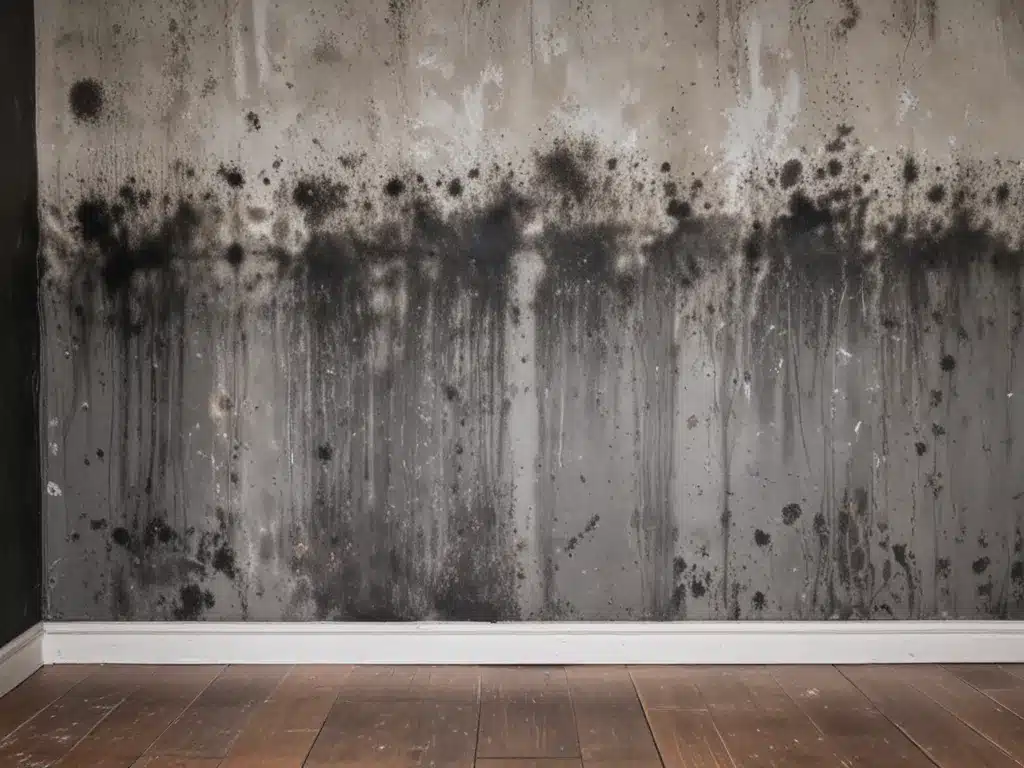Mould can be a nuisance in any home. As a homeowner who has battled mould multiple times, I want to share my top tips for getting rid of it for good.
What Causes Mould?
Mould spores are present in the air we breathe every day. When these spores land on a damp surface, they can begin to grow and multiply, causing mould.
The main causes of excess moisture that allows mould to thrive include:
- Leaks or flooding
- High humidity
- Poor ventilation
- Condensation on cold surfaces like windows and walls
Controlling moisture is crucial to preventing and eliminating mould.
How to Identify Mould
Mould can be different colors like black, green, or grey. It often appears as spots or discoloration on surfaces like walls, ceilings, and tile grout.
Signs of a mould problem include:
- Musty, earthy odor
- Stains or fuzzy/slimy patches
- Peeling paint or wallpaper
- Health issues like coughing, sinus congestion, and headaches
If you suspect mould, inspect all areas prone to moisture like basements, bathrooms, under sinks, and around windows. Act quickly before it spreads.
Health Risks of Mould Exposure
In addition to damaging your home, mould can negatively impact your health. Spores and particles released by mould can cause respiratory issues if inhaled.
People at higher risk include:
- Infants and children
- Elderly
- Those with asthma, allergies, or compromised immune systems
Symptoms may include nasal congestion, coughing, wheezing, eye irritation, and skin rashes. Be sure to limit exposure, especially for those at high risk.
How to Get Rid of Mould
Tackling a mould issue thoroughly is crucial to preventing regrowth. Here are my proven steps:
1. Identify and Fix the Source of Moisture
This is the most critical step! Look for leaks, floods, damp basement walls, humidifiers, overflowing plants, and any other excess moisture sources. Fix all issues fully before moving on.
2. Suit Up for Safety
Wear protective gear like gloves, goggles, and a respirator mask rated for mould. Limit exposure to spores. Open windows for ventilation.
3. Scrub Away Surface Mould
Use a stiff brush or sponge and a detergent/bleach solution to scrub mould off hard surfaces. Dry quickly with towels.
4. Discard Porous Materials with Mould
Toss out carpeting, drywall, insulation, and other porous items. Mould roots can grow deep and be impossible to fully eliminate.
5. Apply a Mould-Killing Product
Use a dedicated fungicidal wash or concentrated bleach solution to kill any remaining spores. Allow proper contact time.
6. Replace Affected Drywall and Insulation
Cut out an extra 2 inches beyond any stains. Replace with fresh, mould-resistant materials.
7. Clean Nearby Surfaces
Clean surrounding areas like baseboards, floors, and vents to remove lingering spores and prevent quicker regrowth.
8. Improve Ventilation and Air Flow
Use exhaust fans, open windows, and dehumidifiers to maintain lower indoor humidity. Keep air circulating.
9. Be Diligent About Moisture Control
Stay vigilant about leaks, humidity, and dampness. Mould can return quickly in the right conditions. Prevention is key!
When to Call a Professional
For large areas of mould or situations like mould inside walls, consider calling a certified mould remediation contractor. They have the expertise and equipment to fully eliminate mould and prevent regrowth.
Professional mould remediation may also be advisable if you have a mold allergy or sensitivity.
Maintaining a Mould-Free Home
Here are some tips for keeping your home mould-free long-term:
- Inspect for leaks frequently
- Run kitchen and bathroom exhaust fans
- Allow proper bathroom ventilation
- Dehumidify damp basements and crawlspaces
- Clean bathrooms regularly with anti-mould products
- Wipe down moisture on windows and sills quickly
- Ensure proper drainage around your home’s foundation
With diligent moisture control and quick action when mould appears, you can successfully banish mould for good. Don’t let it get a foothold in your home.







